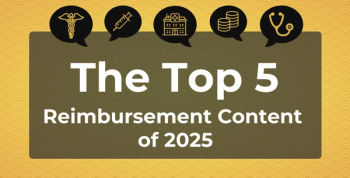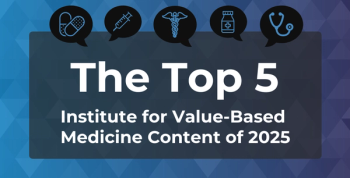
The American Journal of Managed Care
- May 2025
- Volume 31
- Issue 5
- Pages: e138-e140
Using Data Exchange to Improve Quality Reporting, Target Outreach, and Reduce Cost
Key Takeaways
Covered California and Health Net’s novel data exchange initiative significantly improved quality measurement and potentially reduced costs by more than $640,000.
ABSTRACT
The burden of collecting data and reporting on quality measures is a strain on both providers and payers, exacerbated by the multitude of required metrics and disparate data systems. Covered California, the California health benefits exchange that supports more than 1.9 million Californians receiving insurance through the Affordable Care Act, and insurance carrier Health Net, serving approximately 138,000 members on the exchange, implemented a novel approach to data exchange using Covered California’s all-payer claims database (APCD). This initiative used historical cancer screening data for Health Net enrollees who had been insured under different Covered California plans in the prior 5 years and analyzed the impact of historical data sharing on screening rates, cost, and efficiency.
Historical data exchange led to improved accuracy of quality measure reporting by up to 14% in breast cancer screening quality scores. Additionally, through reduced administrative costs and the elimination of duplicative testing, Health Net saw more than $640,000 in estimated potential cost savings. The success of the pilot between Covered California and Health Net has led to an expansion across all carriers, highlighting the potential of APCDs to facilitate more targeted quality improvement strategies and improve efficiency in health care. This initiative underscores the importance of innovative data exchange strategies to advance health care quality, efficiency, and equity.
Am J Manag Care. 2025;31(5):e138-e140.
Takeaway Points
Covered California and Health Net’s approach to data exchange demonstrates the impact and necessity of creative and expanded data sharing. This initiative led to cost reductions, improved quality measure performance, and increased operational efficiency.
- Facilitated data exchange improves quality measure performance, especially in an exchange population with substantial churn.
- As a result, payers can tailor their outreach and reduce unnecessary testing, which can have substantial cost savings—more than $640,000 in this case.
- These findings underscore the importance of leveraging existing data to inform health care delivery and outreach efforts and the importance of policies to enable and enhance data sharing.
Given recent worsening health indicators in the US, such as life expectancy, maternal mortality, and infant mortality,1-3 a renewed focus on ensuring both access to and receipt of high-quality care is paramount. However, the cost of current state quality metric reporting is substantial, and the burden of collecting and reporting data is a major source of strain on both providers and payers.4 This is driven by both the increasing number of quality metrics required and the disparate data systems used across the health care system. Although welcome efforts to consolidate the number and complexity of measures among regulators and purchasers are occurring at both the national and state levels,5 the issue of disparate data systems persists. These problems are compounded for the population who receive care as part of the health insurance marketplace, where the median duration of coverage is approximately 14 months in California, consistent with trends seen across the country.6
Opportunity
Covered California, the California health benefits exchange that supports more than 1.9 million Californians receiving insurance through the Affordable Care Act, and insurance carrier Health Net, serving approximately 138,000 members on the exchange, implemented a novel approach to data exchange to address these burdensome problems. Covered California operates an all-payer claims database (APCD) that includes administrative data collected since 2014. In early 2023, Health Net invited Covered California to partner to determine whether the APCD could be used to extract historical cancer screening data for its current enrollees who had been enrolled under other Covered California plans in prior years. This request directly aligned with Covered California’s commitment to facilitate and advance data exchange as well as better support the accuracy of the insurance carriers’ quality data to support member receipt of high-quality, equitable care.
Methodology
Using Healthcare Effectiveness Data and Information Set (HEDIS) specifications, Health Net identified its total 2022 membership eligible for 3 clinical quality measures: cervical cancer screening (CCS), colorectal cancer screening (COL), and breast cancer screening (BCS). A total of 37,345 Health Net members in health maintenance organization (HMO) plans and 13,214 Health Net members in preferred provider organization (PPO) plans were eligible for CCS. A total of 45,545 Health Net members in HMO plans and 12,313 members in PPO plans were eligible for COL, and 18,696 members in HMO plans and 4110 members in PPO plans were eligible for BCS. Using Covered California’s APCD, we identified members who had coverage with another carrier in a prior year (n = 5551) and fell into the eligible population for 1 or more HEDIS measures (CCS, COL, and/or BCS). Of the total 5551 members, 1463 (26%) had administrative data available related to CCS, COL, or BCS code sets in the APCD. The remaining 4088 members had historical enrollment and/or claims data available in the APCD but none of the codes found in HEDIS code sets for the cancer screening measures of interest. Covered California then pulled historical cancer screening administrative data for Health Net’s current enrollees using a look-back period of 5 years (2018-2022) based on the integrity and completeness of historical data in the APCD. We used code sets from BCS, CCS, and COL HEDIS specifications to identify screening exams completed as well as reasons for exclusion. The Covered California APCD does not include clinical data such as laboratory results. Encounter data, including dates of service and procedures performed, were available and were included in this analysis.
Quality measure performance was calculated using HEDIS specifications prior to and after the incorporation of the additional administrative data found for the 5551 Health Net enrollees who had coverage via another carrier in a prior year. We used Stata 17 (StataCorp LLC) to conduct paired proportion t tests, comparing cancer screening rates pre– and post data sharing for each of the cancer screenings (BCS, CCS, and COL).
Results
Data exchange led to improvements in the calculated rates of performance across CCS, COL, and BCS across both the HMO and PPO lines of business by improving the completeness and accuracy of quality measure data. Calculated rates of CCS increased by 2% and 3% and COL increased by 1% and 2% for HMO and PPO enrollees, respectively. Calculated rates of BCS increased by 14% for both HMO and PPO enrollees. Based on the results of the paired t tests, the rate increases post data sharing are statistically significant, evidenced by significant z scores and negligible P values across all cancer types and lines of business (HMO and PPO). Specifically, BCS showed the most significant shift (HMO: z = –27.8869; PPO: z = –12.7569; P < .0001 for both lines), followed by CCS (HMO: z = –5.5786; PPO: z = –4.8890; P < .0001 for both lines) and COL (HMO: z = –3.0304; P = .0012; PPO: z = –3.5347; P = .0002). See the
Impact
Facilitating data exchange, especially for a population with high turnover, has substantial impacts, including (1) improvement in the accuracy and completeness of quality measurement data, (2) direct reduction of health plan administrative cost and burden of quality reporting and “hunting” for data, and (3) elimination of low- and no-value duplicative outreach and testing. Additionally, this effort has the potential to increase trust at the provider level in accuracy of reporting and improve the member experience when outreach can be tailored more accurately to those with gaps. We describe each of these areas of impact in detail.
Improvement in the accuracy and completeness of quality measure data and reported rates. Across all cancer screening metrics, and especially prominent with the BCS metric, there was a statistically significant increase in quality measure performance rates when we combined historical data from previous carriers with Health Net’s currently available data. There were 1– and 2–percentage point improvements in the calculated rates for COL in HMOs and PPOs, respectively, and 2– and 3–percentage point improvements for CCS in HMOs and PPOs. The most significant increase in calculated quality measure scores was seen in BCS rates, at a 14–percentage point improvement. This was unexpected and was likely due to the strength of claims-based administrative reporting for the BCS measure.
Reduction in administrative cost and burden. Health Net was able to receive data from a variety of health plans in 1 consolidated file because of Covered California’s collection of all-payer claims. By sharing these data on its membership, Health Net received current enrollee data from 1 source, even though 5551 of its members were on other plans during prior years.
Of note, Covered California maintains its APCD and pulls quality measure data regularly, both to meet state regulation around public reporting requirements on quality and cost and to enforce its contract with its qualified health plans. Covered California incurred minimal administrative burden to execute this data exchange project given that its role in maintaining its APCD is a core function of being an active purchaser.
Elimination of duplicative outreach and testing. There were 1483 members for whom we were able to identify historical cancer screenings completed prior to them joining Health Net. Without this data exchange project, these members would have been contacted for repeat testing and potentially had duplicate testing or testing at a closer interval than clinically indicated. This represents a potential cost savings of $640,000 or $0.39 per member per month due to avoidance of duplicative testing and unnecessary outreach. See the eAppendix (
Impact on overall quality improvement budget. Improved accuracy of quality measure performance positively impacts performance in quality measurement programs that assign penalties for low performance. This allows Health Net to retain those dollars within its quality improvement budget and apply them toward member improvement projects and interventions.
Learnings and Next Steps
The successful pilot between Covered California and Health Net led to subsequent expansion and data sharing across all carriers participating in the California state-based marketplace in 2023. This leverages the Covered California–operated APCD in a novel manner and enhances Covered California’s role as a facilitator and enabler of accurate and complete quality data and measurement rather than solely as an enforcer. Supporting collaboration across the ecosystem has been and continues to be a cornerstone of the success of California’s marketplace, as exemplified by the vision statement to “improve the health of all Californians by assuring their access to affordable, high-quality care.”
As part of the implementation and scaling process, several lessons were learned. One key adjustment will be to conduct the query and data exchange as early in the year as possible to account for claims runout. This allows for the health plans to start the year with a more complete data set and view on new enrollees, which in turn leads to more focus and precision in population health outreach. A second modification would be to use a Health Insurance Portability and Accountability Act–compliant secure dissemination platform for speed and efficiency of data sharing. Finally, on the health plan side, this process validated the importance of supplementing data with additional sources from a population health standpoint, particularly for new members for whom historical data are lacking.
There is an opportunity for future study of additional areas of impact beyond quality measurement and cost. First, providing health plans with more comprehensive historical health care data can positively impact provider trust and engagement if these data can be passed along to providers at the point of care and assist in clinical decision-making. This effort allowed Health Net to equip its providers with more accurate and comprehensive clinical information about their patients and may warrant investigation of the impact on provider trust and burnout in future studies. Second, this data exchange project had the potential to positively improve the member experience by limiting outreach to members who have otherwise been contacted for potential duplicative testing. As part of population health outreach campaigns, health plans including Health Net, as well as provider groups, utilize a variety of communications targeting members with gaps in care. Prompting a member to complete a study that they already have completed may result in confusion and poor experience, particularly for screenings that are not required annually such as BCS, CCS, and COL. Data exchange’s direct impact on patient experience warrants future study.
This effort highlights the unique potential role of purchasers in scaling best practice with the goal of improving efficiencies, enhancing both member and provider experience, and advancing quality and equity.
Author Affiliations: Covered California (BR, CH-C), Sacramento, CA; Health Net of California (TAM), Sacramento, CA.
Source of Funding: None.
Author Disclosures: The authors report no relationship or financial interest with any entity that would pose a conflict of interest with the subject matter of this article.
Authorship Information: Concept and design (BR, TAM); analysis and interpretation of data (BR, CH-C, TAM); drafting of the manuscript (BR, CH-C); critical revision of the manuscript for important intellectual content (BR, TAM); statistical analysis (CH-C, TAM); and administrative, technical, or logistic support (BR).
Address Correspondence to: Barbara Rubino, MD, Covered California, 1601 Exposition Blvd, Sacramento, CA 95815. Email: Barbara.rubino@covered.ca.gov.
REFERENCES
1. Life expectancy in the U.S. dropped for the second year in a row in 2021. News release. CDC. August 21, 2022. Accessed November 2, 2023.
2. Hoyert DL. Maternal mortality rates in the United States, 2021. CDC. March 16, 2023. Accessed November 2, 2023.
3. Ely DM, Driscoll AK. Infant mortality in the United States: provisional data from the 2022 period linked birth/infant death file. CDC. November 1, 2023. Accessed November 2, 2023.
4. Saraswathula A, Merck SJ, Bai G, et al. The volume and cost of quality metric reporting. JAMA. 2023;329(21):1840-1847. doi:10.1001/jama.2023.7271
5. Jacobs DB, Schreiber M, Seshamani M, Tsai D, Fowler E, Fleisher LA. Aligning quality measures across CMS—the universal foundation. N Engl J Med. 2023;388(9):776-779. doi:10.1056/NEJMp2215539
6. Wolf E, Slosar M, Menashe I. Assessment of churn in coverage among California’s health insurance marketplace enrollees. JAMA Health Forum. 2022;3(12):e224484. doi:10.1001/jamahealthforum.2022.4484
Articles in this issue
Newsletter
Stay ahead of policy, cost, and value—subscribe to AJMC for expert insights at the intersection of clinical care and health economics.









